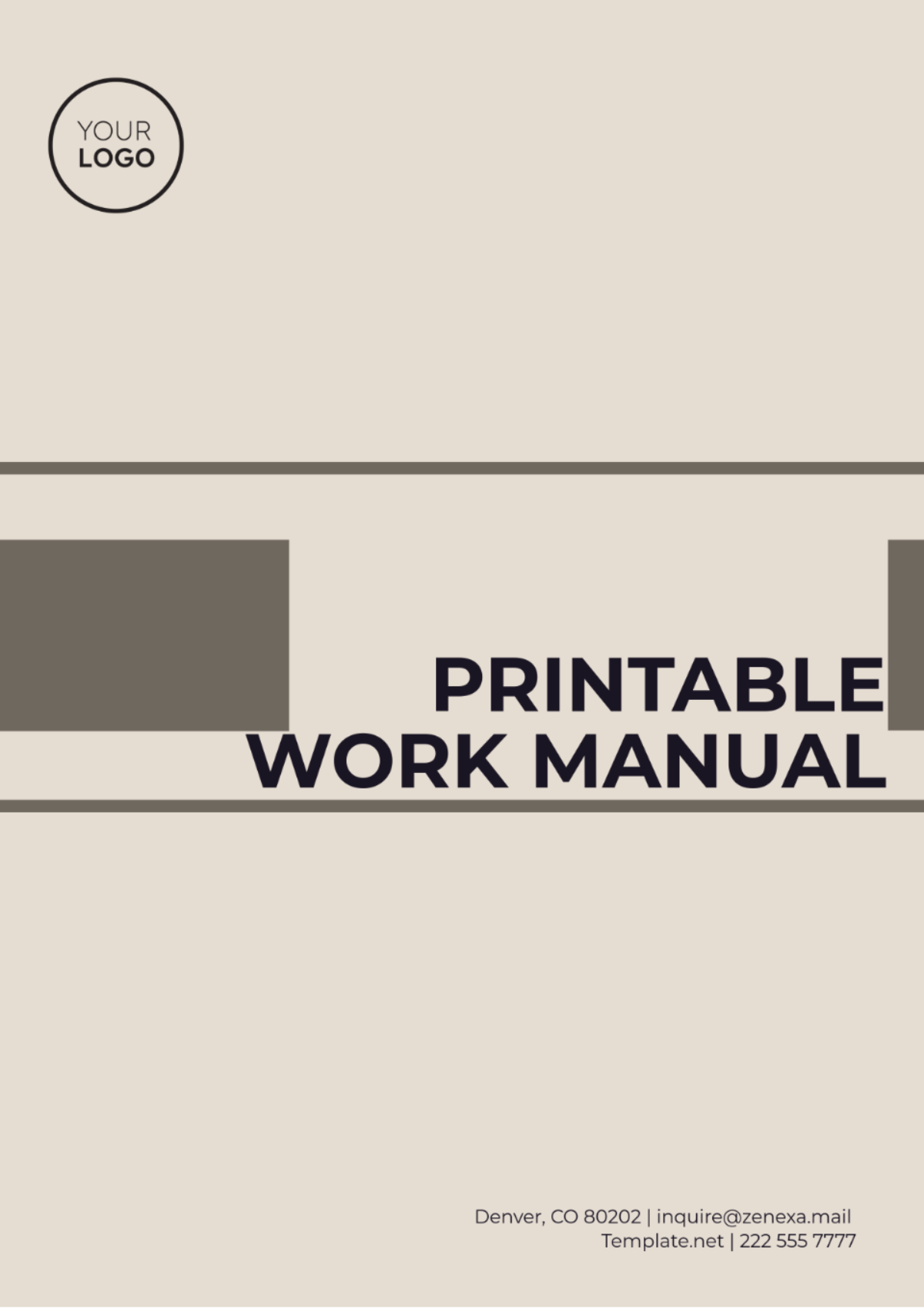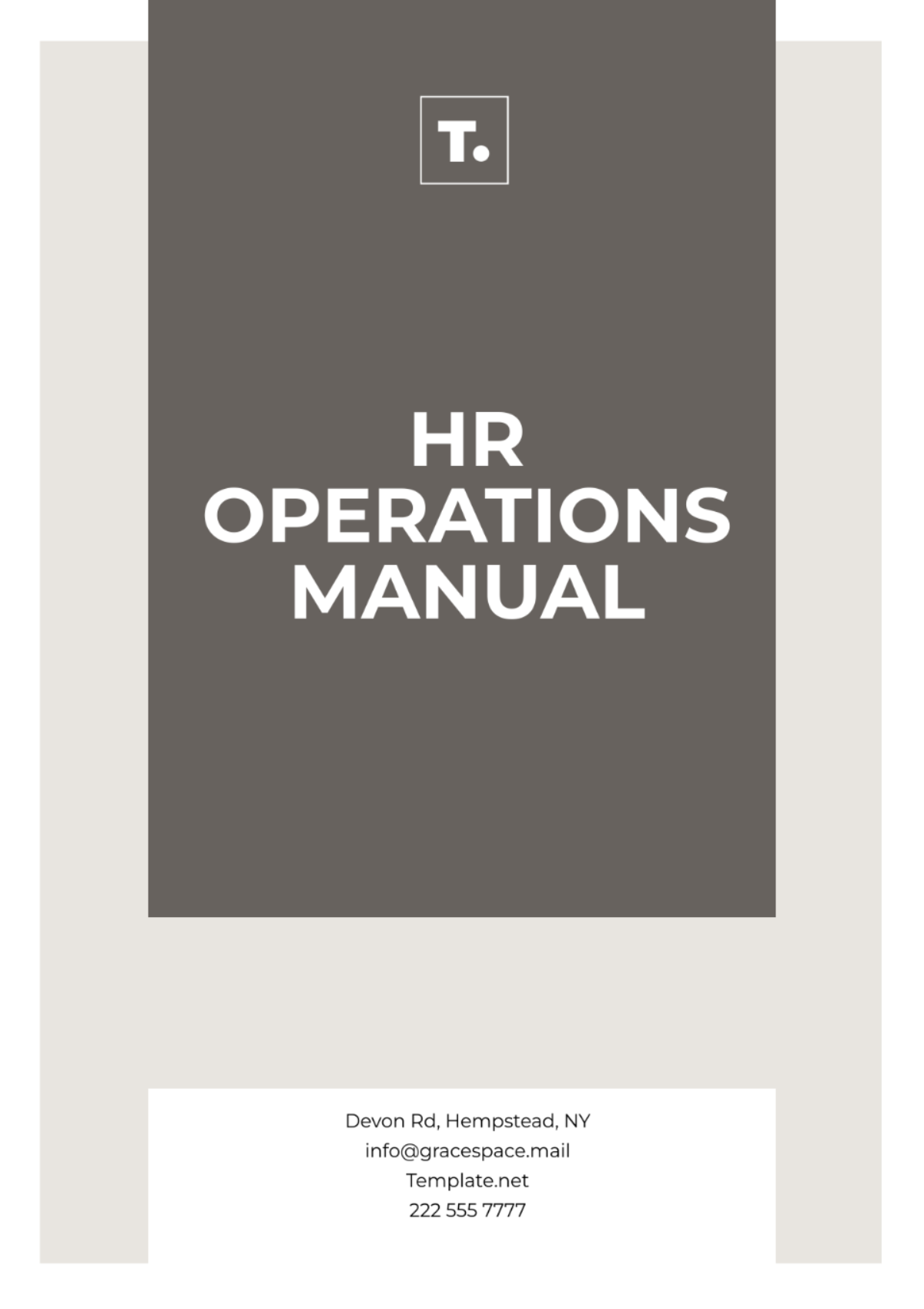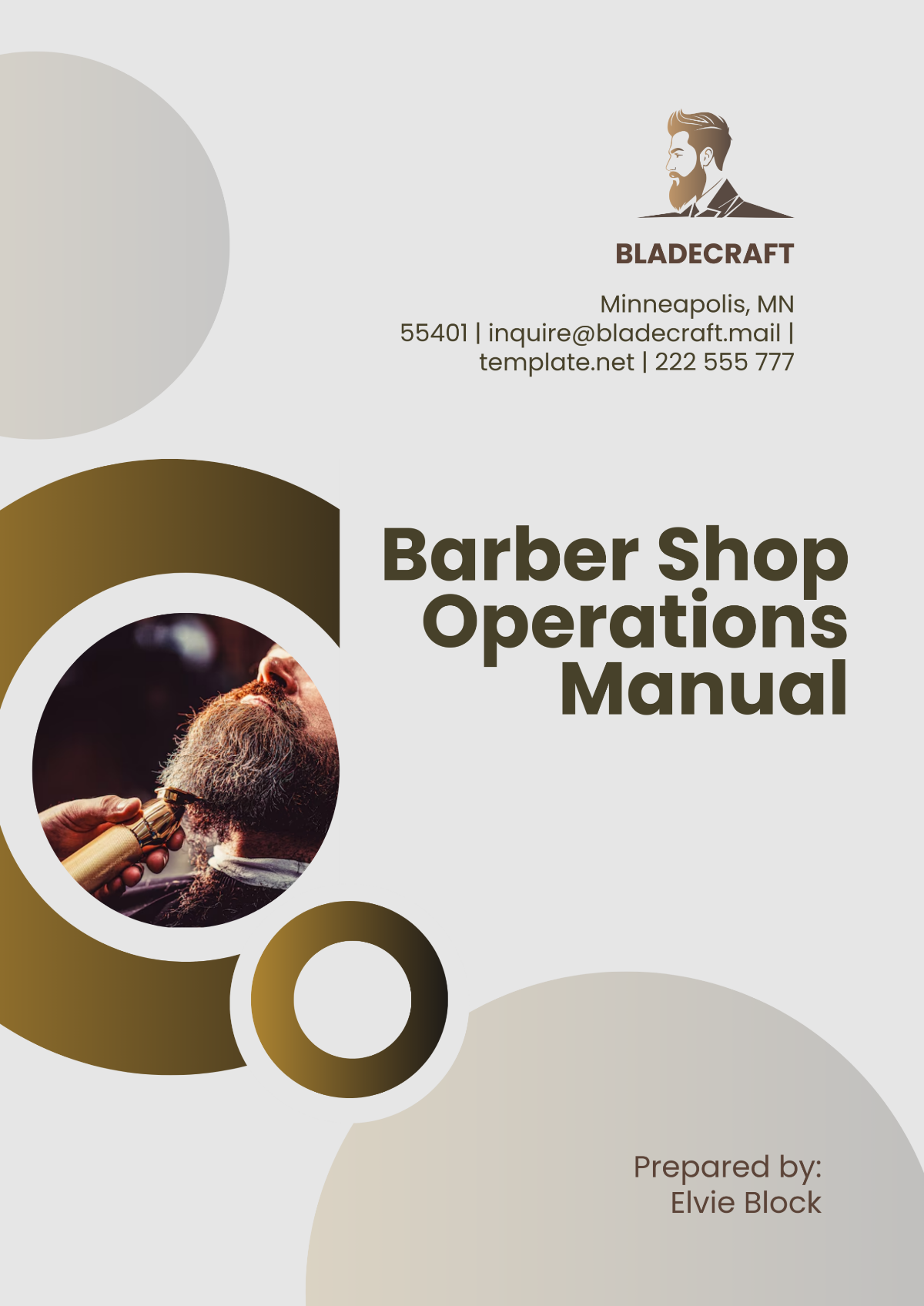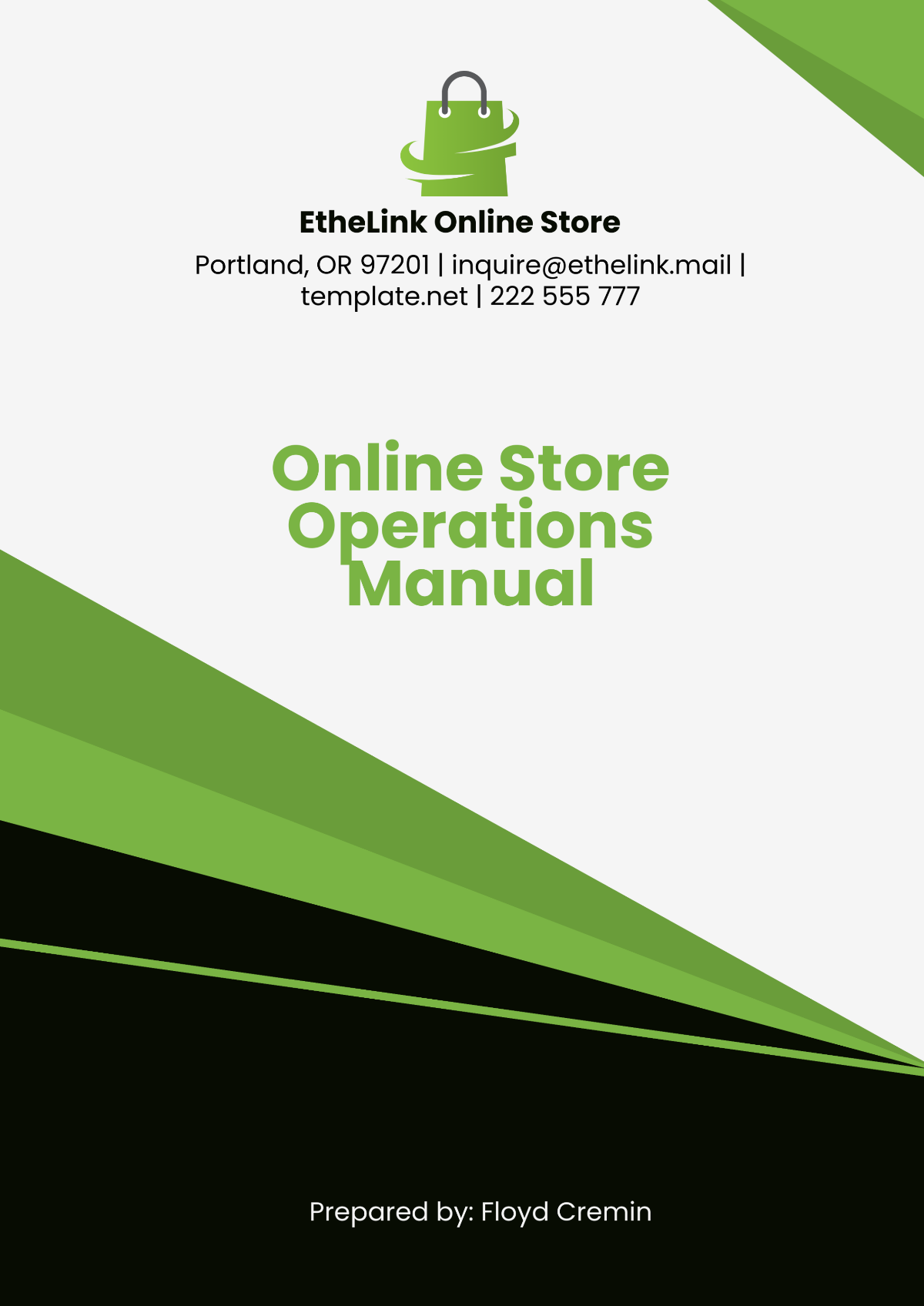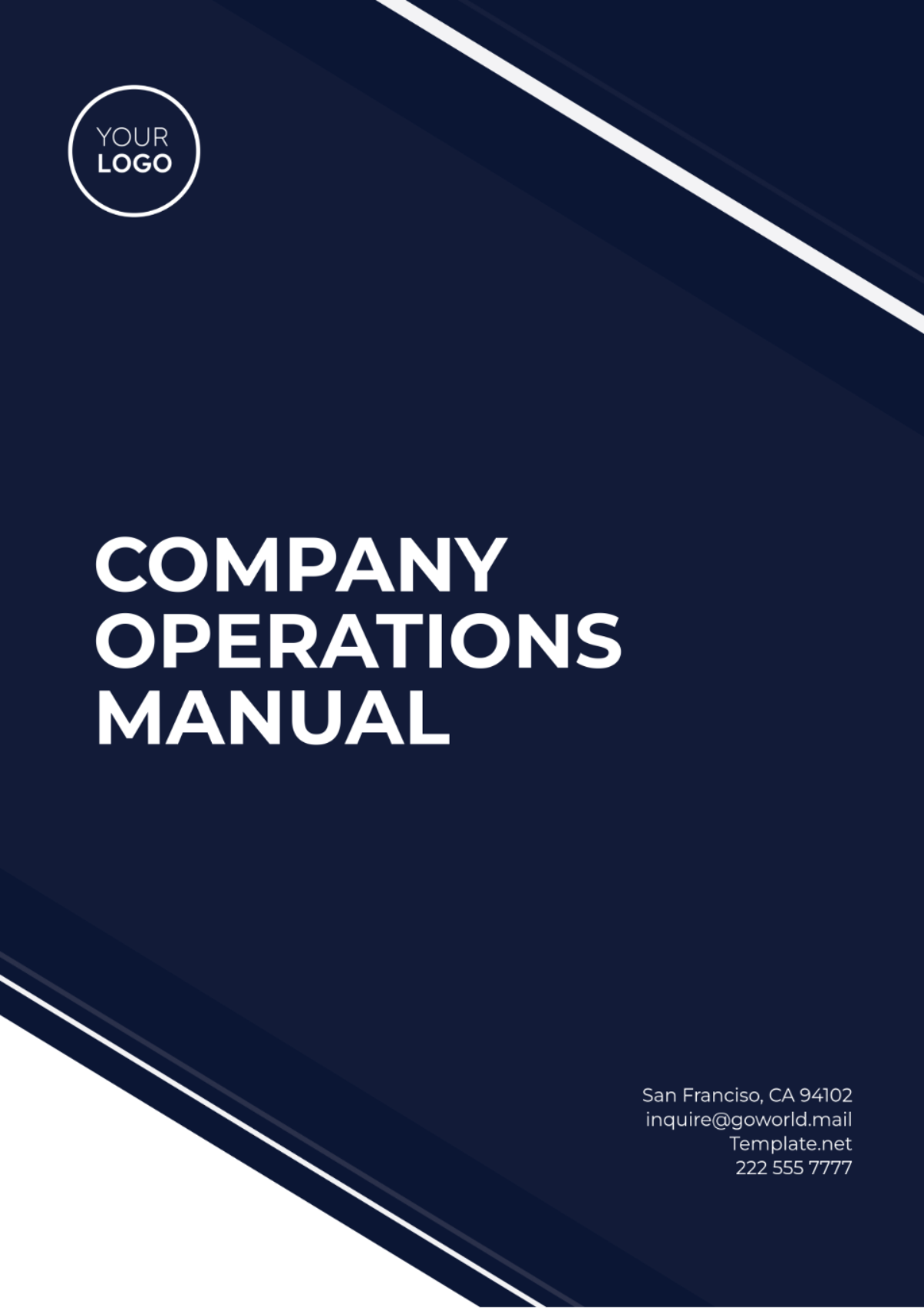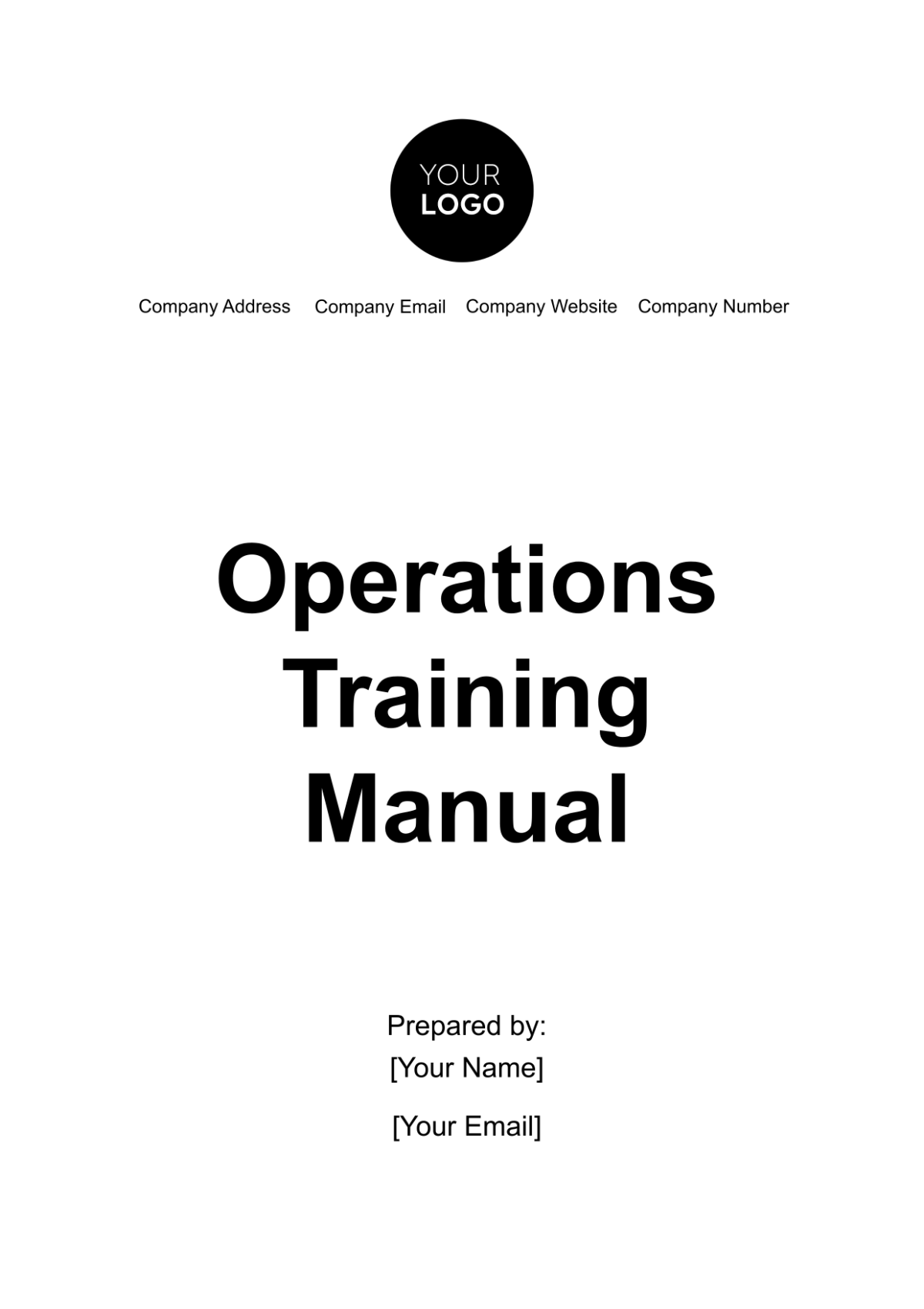Bakery Recipe Manual Sample
I. Introduction
Welcome to the [Your Company Name] Recipe Manual, your comprehensive guide to mastering the art of baking. At [Your Company Name], we pride ourselves on delivering exceptional baked goods that delight our customers and exceed their expectations. This manual is designed to equip you with the knowledge and techniques necessary to recreate our signature recipes with consistency and precision. Whether you're a seasoned baker or just starting out, you'll find valuable insights and detailed instructions to help you achieve perfect results every time.
Our recipes are developed with a focus on quality, flavor, and innovation, ensuring that each product is a true reflection of the [Your Company Name] brand. We use only the finest ingredients, sourced from trusted suppliers, to maintain the highest standards of taste and freshness. In addition to providing step-by-step instructions, this manual also includes essential information on food safety, equipment maintenance, and quality control. By following the guidelines outlined in this manual, you'll be able to produce baked goods that are not only delicious but also safe and compliant with US food standards. Welcome to the [Your Company Name] family, and happy baking!
II. Standard Operating Procedures
Ensuring the highest quality in every baked good we produce at [Your Company Name] requires a set of carefully crafted standard operating procedures. This section details the essential processes and guidelines that our team follows to maintain consistency, safety, and excellence in our baking practices. By adhering to these procedures, we can guarantee that each product meets our rigorous standards and delights our customers.
From recipe development and ingredient sourcing to equipment maintenance, every step of our operations is meticulously planned and executed. This structured approach not only enhances the efficiency and reliability of our bakery but also upholds the integrity and reputation of the [Your Company Name] brand.
A. Recipe Development
Developing a recipe involves meticulous testing and adjustments to ensure flavor, texture, and consistency. Here’s how we approach recipe development at [Your Company Name]:
Conceptualization: Brainstorm and outline the desired characteristics of the baked good.
Ingredient Selection: Choose high-quality ingredients, considering flavor profiles and dietary restrictions.
Initial Testing: Create a small batch to test the recipe.
Evaluation: Assess the baked good for taste, texture, appearance, and shelf life.
Adjustments: Modify the recipe as needed based on feedback.
Finalization: Once the recipe meets our standards, it is documented and added to the manual.
B. Ingredient Sourcing
We prioritize sourcing ingredients from reputable suppliers who meet our quality standards. Ingredients should be:
Fresh: Regularly check expiration dates and storage conditions.
Safe: Ensure all ingredients are free from contaminants and allergens.
Sustainable: Whenever possible, choose ingredients that are organic and sustainably sourced.
C. Equipment and Tools
Maintaining equipment and tools is essential for consistency and safety. Our bakery uses:
Mixers: Regularly serviced to ensure proper function.
Ovens: Calibrated to maintain accurate temperatures.
Measuring Tools: Calibrated scales and measuring cups for precise measurements.
III. Bakery Recipes
Welcome to the heart of the [Your Company Name] Recipe Manual – our collection of carefully crafted bakery recipes. This section is dedicated to guiding you through the preparation of our most beloved baked goods, from the warm and comforting classic white bread to the delicate and flaky croissants. Each recipe is designed to ensure consistent, high-quality results that reflect the standards and passion we put into every product.
Our recipes have been meticulously tested and refined to deliver exceptional flavor and texture. You'll find detailed, step-by-step instructions, along with essential tips to help you perfect your baking techniques. Whether you're baking bread, pastries, cakes, or cookies, this section will be your trusted companion in creating delicious treats that embody the [Your Company Name] tradition of excellence.
Bread Recipes |
|---|
Classic White Bread |
|---|
Ingredients |
|
Instructions |
|
Pastry Recipes |
|---|
Croissants |
|---|
Ingredients |
|
Instructions |
|
Cake Recipes |
|---|
Chocolate Cake |
|---|
Ingredients |
|
Instructions |
|
Cookie Recipes |
|---|
Chocolate Chip Cookies |
|---|
Ingredients |
|
Instructions |
|
IV. Quality Control
Ensuring the highest standards of quality is paramount at [Your Company Name]. Our commitment to excellence is reflected in our rigorous quality control procedures, which guarantee that every product leaving our bakery is of the finest caliber. This section outlines our comprehensive approach to quality control, including detailed testing and tasting protocols and the essential role of feedback in maintaining and improving our recipes.
Testing and Tasting
To maintain the integrity and consistency of our baked goods, regular testing and tasting are integral parts of our production process. Each batch undergoes a meticulous evaluation to ensure it meets our high standards in several key areas:
Flavor: The flavor profile of our products must be balanced and true to the original recipe. We evaluate the taste for any off-notes, ensuring the final product delivers the intended flavor experience. This involves tasting each batch to confirm that the ingredients have blended harmoniously.
Texture: The texture of our baked goods is crucial to their overall quality. For example, our breads should be airy and soft, our cookies should have the right balance between chewy and crunchy, and our cakes should be moist and tender. Each batch is assessed to ensure it meets these specific textural requirements.
Appearance: Visual appeal is an important aspect of our quality standards. Our products are evaluated for uniformity in shape, size, and color. Any irregularities can indicate issues in the baking process that need to be addressed. We strive for consistency in every batch, as a visually appealing product enhances the customer’s overall experience.
Feedback and Adjustments
Continuous improvement is a core value at [Your Company Name]. We believe that feedback from both customers and staff is invaluable in refining our recipes and processes. Here’s how we incorporate feedback into our quality control:
Customer Feedback: We actively seek and review customer opinions through various channels, including surveys, reviews, and direct feedback. Positive feedback helps us identify our strengths, while constructive criticism highlights areas for improvement. This customer-driven approach ensures that we remain responsive to the needs and preferences of our patrons.
Staff Feedback: Our bakers and kitchen staff are encouraged to share their insights and suggestions for recipe and process improvements. Their hands-on experience provides critical insights into the practical aspects of our production. Regular staff meetings and feedback sessions create an open dialogue where ideas for enhancement can be discussed and implemented.
We make sure that our products constantly live up to the high standards that distinguish [Your Company Name] by combining frequent testing and tasting with a strong feedback system. Our commitment to quality control not only enhances the reliability of our baked goods but also fosters a culture of continuous improvement, ensuring that we remain at the forefront of the baking industry.
V. Food Safety and Hygiene
Ensuring food safety and maintaining a hygienic environment are paramount at [Your Company Name]. This section outlines the stringent cleaning, sanitation, and storage procedures we follow to prevent contamination and spoilage. Adhering to these guidelines not only guarantees the quality of our baked goods but also protects the health and well-being of our customers and staff. By implementing robust food safety practices, we uphold our commitment to excellence and compliance with US food safety standards.
Cleaning and Sanitation
Maintaining a clean and sanitary environment is critical to preventing contamination and ensuring the safety of our baked goods. Our cleaning and sanitation procedures are designed to meet the highest standards of hygiene.
Daily Cleaning: At the end of each day, all surfaces and equipment must be thoroughly cleaned. This includes countertops, mixers, ovens, and utensils. Use food-safe cleaning agents and ensure that all residues are removed. Pay special attention to high-touch areas and equipment that comes into direct contact with food.
Weekly Deep Cleaning: Perform a comprehensive deep cleaning of the entire bakery once a week. This involves moving equipment to clean underneath and behind it, scrubbing floors, walls, and ceilings, and sanitizing storage areas. Ensure that all cleaning is done according to a schedule and documented.
Sanitation Procedures: Use approved sanitizers that are effective against common pathogens. Train all staff in proper sanitation techniques, including the correct use of sanitizers, the importance of wearing gloves and hairnets, and the procedures for handwashing. Regularly review and update sanitation protocols to comply with the latest health regulations.
Handling and Storage
Proper handling and storage of ingredients and products are essential to prevent contamination and spoilage, ensuring that our baked goods remain safe and high-quality.
Storage Conditions: Store ingredients at the correct temperatures and humidity levels. Refrigerated items should be kept at or below 40°F (4°C), while frozen items should be stored at 0°F (-18°C) or lower. Dry goods should be stored in a cool, dry place, away from direct sunlight and moisture.
Shelf Life: Monitor the shelf life of all ingredients and products. Implement a first-in, first-out (FIFO) system to ensure older stock is used before newer stock. Regularly check expiration dates and inspect ingredients for signs of spoilage, such as off-odors, discoloration, or mold.
Labeling: Clearly label all ingredients and products with expiration dates. Include the date of receipt and the use-by date. Ensure that all labels are legible and securely attached. This practice not only helps in inventory management but also ensures that expired items are not inadvertently used.
Through adherence to these food safety and hygiene protocols, [Your Company Name] guarantees the continued cleanliness and safety of our bakery. This commitment to food safety not only protects our customers but also enhances the reputation of our brand as a trusted provider of high-quality baked goods.
VI. Packaging and Labeling
Proper packaging and labeling are essential components of our quality assurance process at [Your Company Name]. These practices not only ensure the freshness and safety of our baked goods but also provide essential information to our customers. This section details the standards and procedures for packaging and labeling that help maintain our high-quality standards and compliance with US food safety regulations.
Packaging Materials
Using the right packaging materials is crucial to protecting our products from contamination and extending their shelf life. At [Your Company Name], we prioritize the use of food-grade packaging materials that meet all safety standards.
Food-Grade Materials: We select packaging materials that are specifically designed for food contact. These materials are free from harmful chemicals and provide a safe barrier between the product and the external environment. Options include food-safe plastics, glassine, and eco-friendly alternatives such as biodegradable packaging.
Protection Against Contamination: Packaging materials should protect products from physical, chemical, and biological contamination. This includes safeguarding against moisture, air, and light, which can affect the freshness and quality of baked goods. All packaging must be sealed properly to prevent tampering and ensure product integrity.
Packaging Design: The design of our packaging is not only functional but also enhances the visual appeal of our products. Packaging should be easy to open, resealable where possible, and designed to prevent damage during transport and handling.
Labeling Requirements
Accurate and comprehensive labeling is vital for informing customers about the contents of our products and any potential allergens. Our labeling practices are designed to meet all regulatory requirements and provide clear, useful information.
Ingredient Lists: All product labels must include a detailed list of ingredients in descending order by weight. This transparency allows customers to make informed choices, especially those with dietary restrictions or allergies.
Allergen Information: Clearly indicate any allergens present in the product. Common allergens that must be disclosed include wheat, eggs, milk, nuts, soy, and shellfish. Use bold text or a separate section on the label to highlight allergen information for better visibility.
Expiration Dates: Each product must have a clearly marked expiration date. This helps customers understand the shelf life and ensures they consume the product while it is still fresh and safe. Use a format that is easily readable, such as "Best By" followed by the date.
Nutritional Information: Where applicable, include nutritional information on the label. This includes calorie content, serving size, and macronutrient breakdown (such as fats, carbohydrates, and proteins). Providing this information helps customers make healthier choices.
Regulatory Compliance: Ensure that all labels comply with US Food and Drug Administration (FDA) regulations. This includes using standardized terminology, maintaining accurate claims, and adhering to labeling guidelines for food products.
[Your Company Name] guarantees that our products are safe, fresh, and completely comply with food safety rules by following certain packaging and labeling guidelines. This commitment not only protects our customers but also reinforces our reputation as a trustworthy and high-quality bakery.



